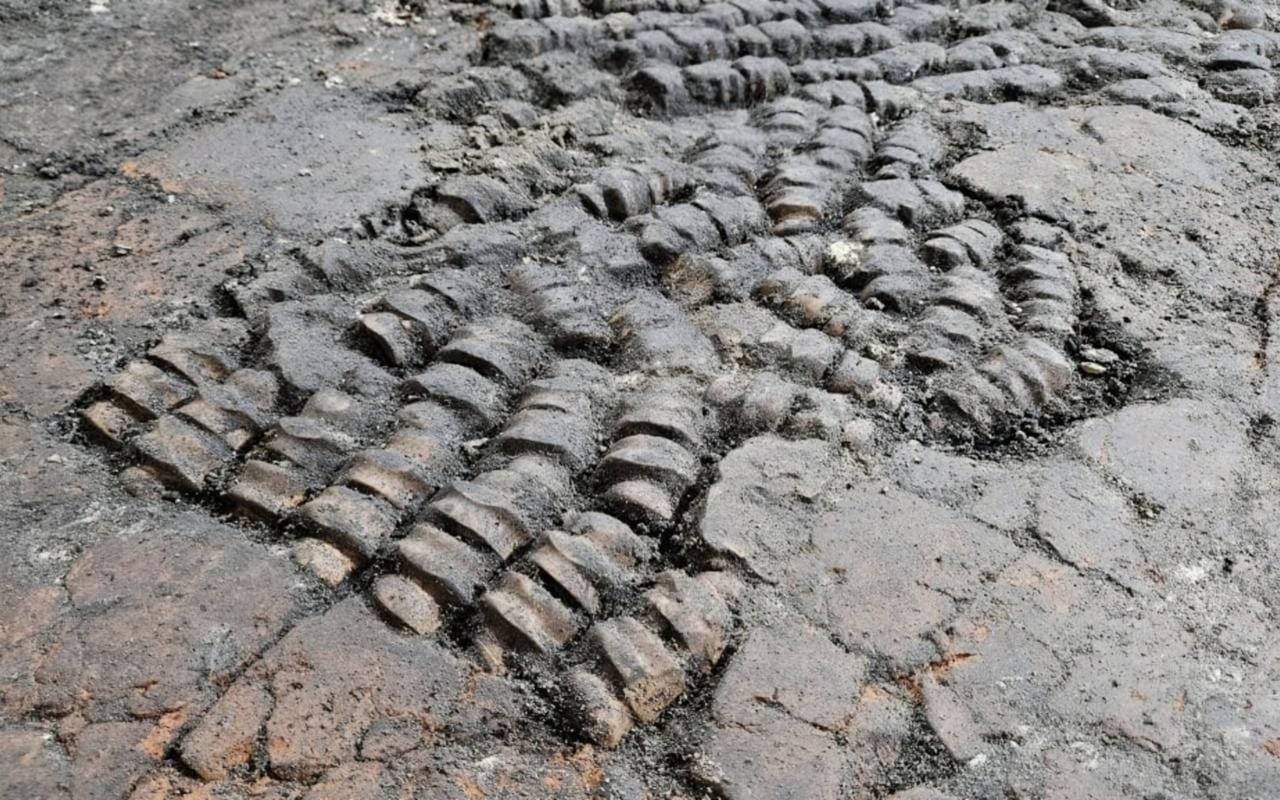A fascinating discovery has emerged from the Achterdam district in Alkmaar, Netherlands, where archaeologists uncovered an unusual 15th-century floor partially constructed from animal bones. The find was made during renovation works on a building in the city’s historic center.
 A close-up of the bone floor in the Netherlands. Credit: Municipality of Alkmaar archaeology team
A close-up of the bone floor in the Netherlands. Credit: Municipality of Alkmaar archaeology team
The municipal archaeologists unearthed a worn tiled floor interspersed with meticulously cut metacarpal and metatarsal bones from cattle. Each bone had been sawn to an identical height and carefully placed with either the upper or cut end facing upward. These bones were likely used to fill gaps in the tiled flooring, but their precise purpose—practical, symbolic, or otherwise—remains unclear.
“This is a rare and remarkable find,” said archaeologist Nancy de Jong, speaking on behalf of Alkmaar’s Archaeology Team. “It’s always a privilege to uncover remnants of a bygone era and add new layers to the historical narrative of our city.”
While similar examples of bone flooring have been found in the Dutch cities of Hoorn, Enkhuizen, and Edam, they are exceedingly rare. The Alkmaar floor bears striking resemblance to the design in Hoorn, where bones were also combined with tiles in a patterned layout.
 Each bone had been sawn to an identical height and carefully placed with either the upper or cut end facing upward. Credit: Municipality of Alkmaar archaeology team
Each bone had been sawn to an identical height and carefully placed with either the upper or cut end facing upward. Credit: Municipality of Alkmaar archaeology team
The current building on the site was constructed in 1609, but archaeologists suspect that the bone floor predates it, potentially originating in the 15th century. This suggests that the present structure may have been built atop older foundations—a common architectural practice of the era.
The discovery raises intriguing questions about why bones were used in flooring during a period when tiles were relatively affordable and widely available. Archaeologists hypothesize that the bones may have been used for practical reasons, such as completing a floor inexpensively, or they may have had a symbolic or craft-related significance tied to the building’s use.
“The tiled floor shows significant wear from extensive use,” de Jong explained. “The inclusion of bones could have been a cost-effective solution, or they may have served a purpose related to the trade or activity conducted here.”
Further research is planned to determine the full extent of the bone floor and uncover any additional clues about its use. Municipal archaeologists will also examine whether similar practices might have occurred elsewhere in the Netherlands.
Anjo van de Ven, Alkmaar’s councilor for heritage, expressed her excitement about the find: “Discovering this floor is incredibly fascinating. There are still so many hidden stories beneath our city, waiting for our team to uncover them. I’m always eager to hear about their latest discoveries.”
More information: Municipality of Alkmaar





